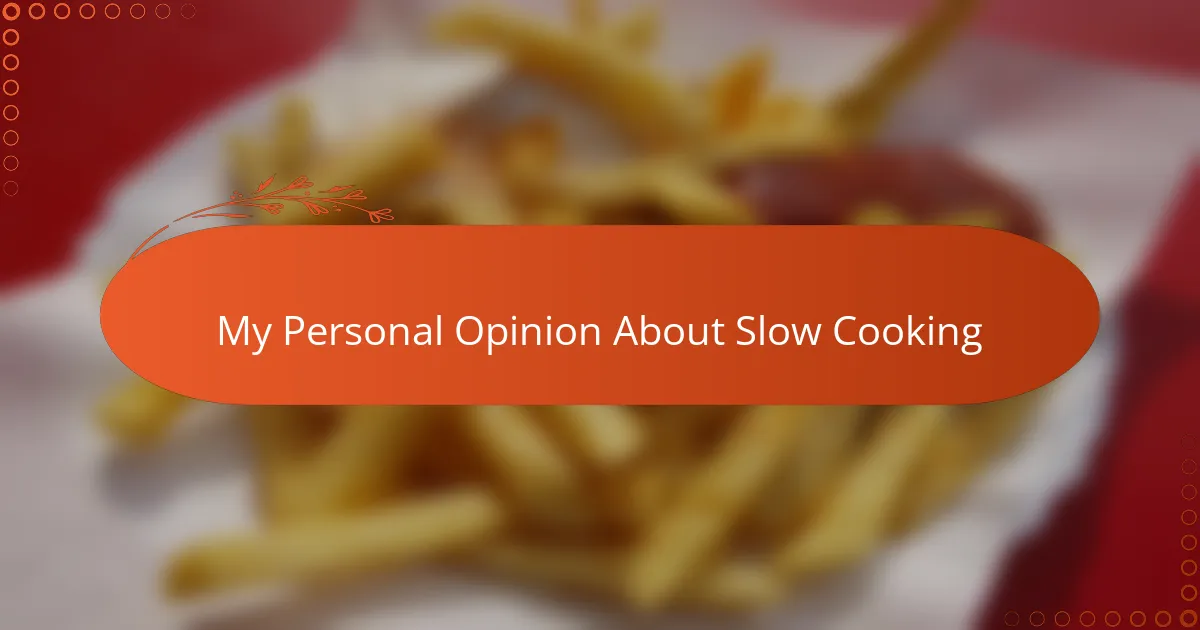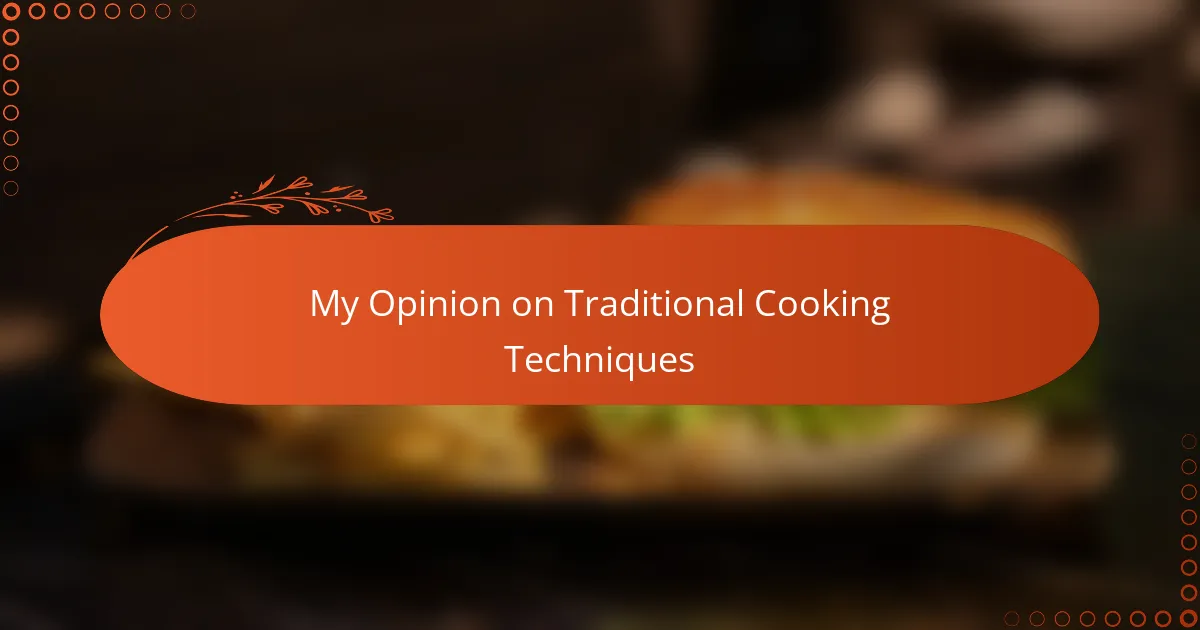Key takeaways
- Slow cooking transforms tough cuts of meat into tender meals, enhancing flavors through low heat and time.
- This method allows homesteaders to utilize local ingredients while freeing up time for other tasks.
- Essential recipes like beef stew, shredded chicken, and chili are perfect for beginners, showcasing the versatility of slow cooking.
- Key tips for success include not lifting the lid frequently, layering flavors at the start, and choosing the right cuts of meat for optimal results.
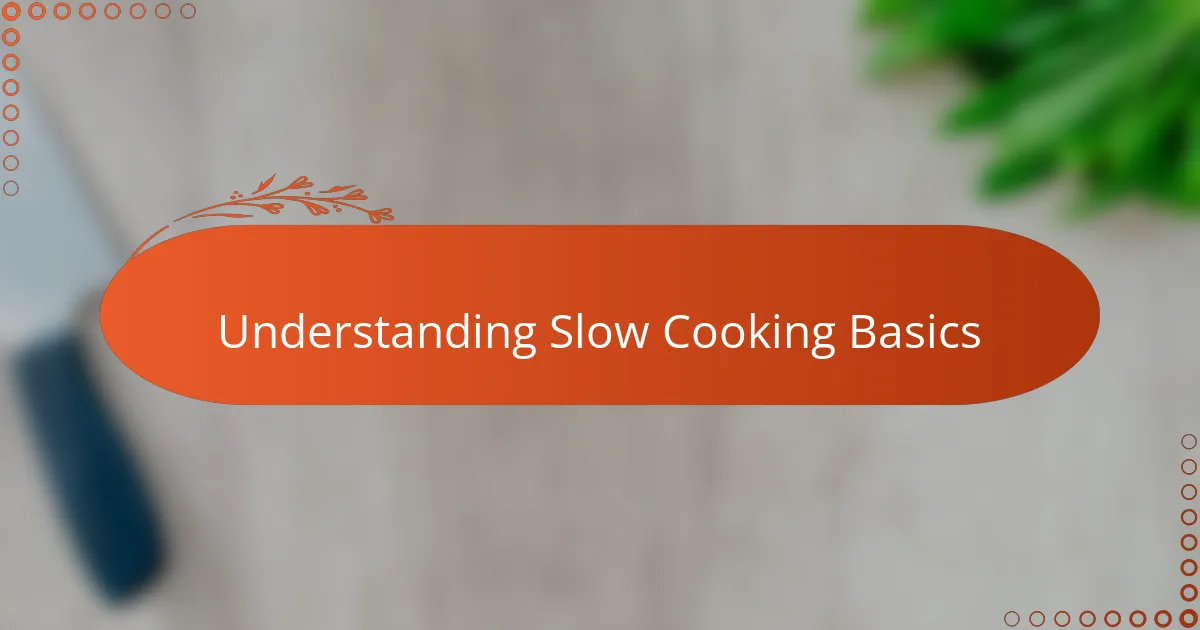
Understanding Slow Cooking Basics
Slow cooking, in its simplest form, is about cooking food at a low temperature for a long time. This technique transforms tough cuts of meat into tender, flavorful dishes. I remember the first time I tried slow cooking—I was amazed at how patient heat turned a simple stew into a cozy, rich meal that felt like a warm hug after a long day.
Have you ever wondered why slow-cooked meals taste so different from those prepared quickly? The magic lies in the gentle simmer that allows flavors to meld and deepen slowly. From my experience, this method not only enhances taste but also creates an effortless rhythm in the kitchen, freeing you up to focus on other homesteading tasks.
Understanding the basics means knowing your equipment and timing. Whether you use a traditional slow cooker or a Dutch oven, the key is low heat and time. Over the years, I’ve learned that mastering these two elements makes slow cooking feel less like a waiting game and more like an enjoyable part of the cooking process.
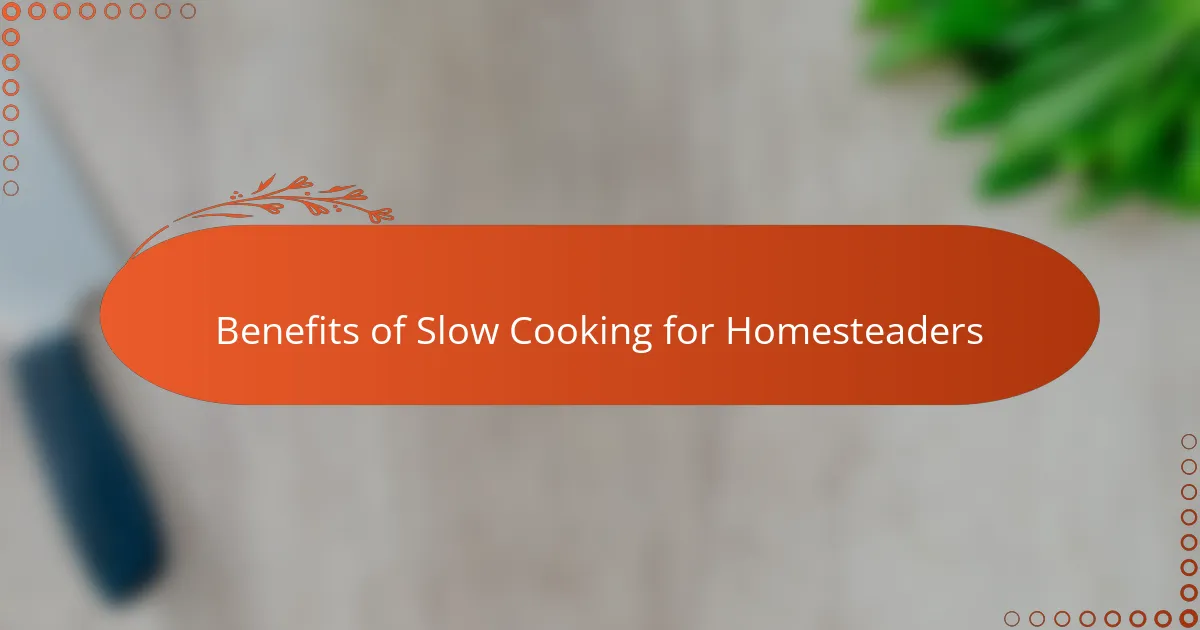
Benefits of Slow Cooking for Homesteaders
One of the biggest benefits I’ve found with slow cooking as a homesteader is how it lets me make the most out of inexpensive, local cuts of meat. Instead of letting those tougher cuts intimidate me, slow cooking turns them into melt-in-your-mouth meals that even picky eaters enjoy. Have you ever been surprised by how something simple can taste so hearty and satisfying after hours in a slow cooker?
Another advantage is the freedom slow cooking gives me during busy days on the homestead. I can set a pot in the morning, then spend my time tending to animals or gardening without worrying about dinner. It’s like having a kitchen helper that turns out delicious food even when I’m knee-deep in chores.
Slow cooking also encourages me to plan meals around what’s fresh and available, rather than rushing to the store. This approach feels closer to the homesteading lifestyle I strive for—making do with what I have and savoring every ingredient. Isn’t there a special kind of satisfaction that comes from seeing ingredients transform slowly into something nourishing and comforting? I think that’s the heart of why slow cooking works so well for us.
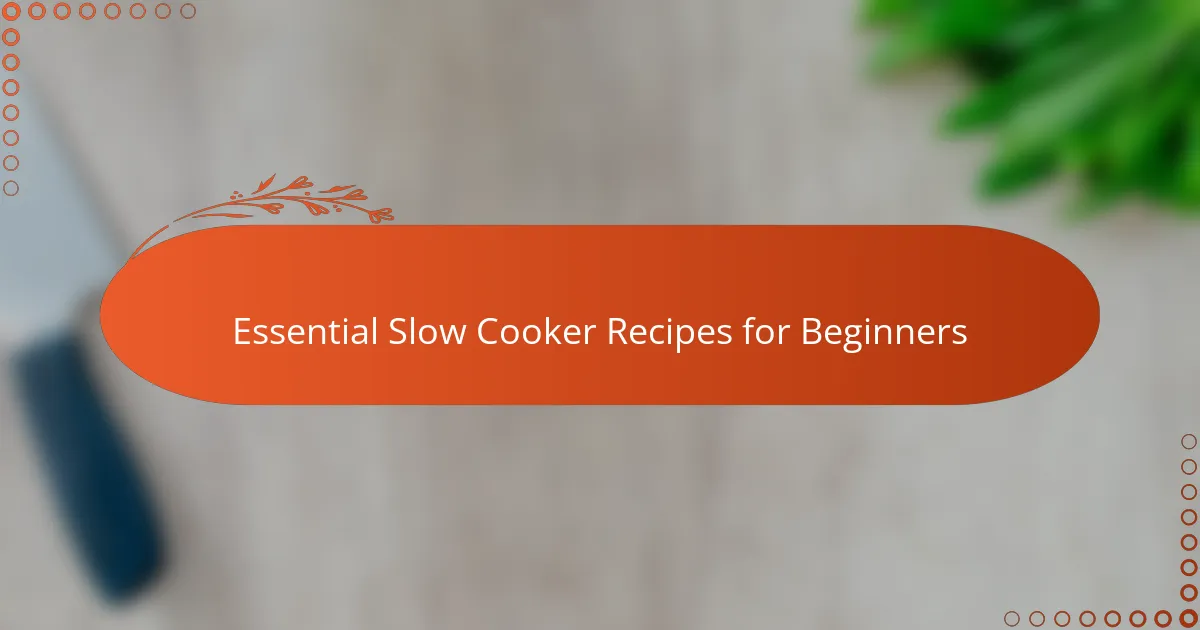
Essential Slow Cooker Recipes for Beginners
When I first started slow cooking, I found that a few essential recipes made all the difference. A classic beef stew was my go-to—it was forgiving, simple, and turned out flavorful every time. Have you ever noticed how just chopping some veggies and tossing in some broth can feel so satisfying when the slow cooker does all the work?
Another beginner-friendly recipe I appreciate is shredded chicken. It’s incredibly versatile and requires minimal effort. From tacos to soups, pulled chicken saved me on busy homestead days, proving that simple ingredients can lead to endless meal possibilities without stress.
One thing I learned early on is that slow cooker chili is a fantastic starting point. It’s hearty, requires few ingredients, and the long cooking time helps the spices meld perfectly. Cooking it reminded me how patience in the kitchen often pays off in richness and depth—a lesson that keeps me reaching for my slow cooker week after week.
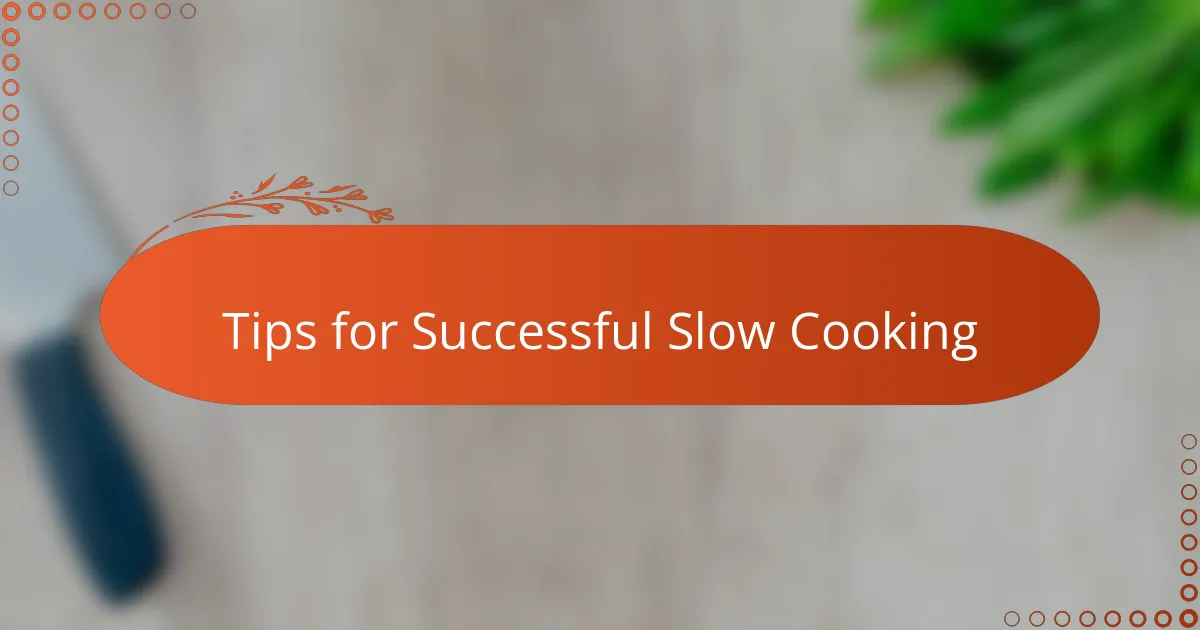
Tips for Successful Slow Cooking
One tip I’ve found absolutely crucial is not to lift the lid too often. I used to sneak peeks every 30 minutes, thinking I was checking progress, but that just lets heat escape and lengthens cooking time. Have you experienced that feeling of impatience, only to realize that the longer you wait quietly, the better the meal turns out? Trust me, resisting that urge is tough but rewarding.
Another thing I’ve learned is layering flavors carefully at the start. Adding aromatics like onions, garlic, and herbs right away lets their essence infuse the whole dish over hours. From my experience, this simple step transforms ordinary ingredients into a deeply satisfying meal that tastes like it was simmering all day, because, well—it was.
Also, I can’t stress enough the importance of choosing the right cut of meat. Tougher, fattier cuts are your slow cooker’s best friends because they break down slowly and become tender. Early on, I made the mistake of using lean cuts, and the results were dry and disappointing. Have you ever been surprised by how a seemingly cheap cut can turn into the highlight of your dinner with just a little patience? That’s slow cooking magic I keep coming back to.

Common Challenges and Solutions
One challenge I often faced was timing—unsure exactly how long to cook certain dishes, especially when trying new recipes. I remember burning a batch of beans early on because I left them simmering too long, which taught me to trust the cooker’s settings and guidelines more carefully. Have you ever been caught second-guessing whether to check or just let it be? Patience really is the best solution here.
Another tricky part can be moisture levels. Sometimes, dishes come out too watery or too dry, which can be frustrating. I found that adjusting the amount of liquid and occasionally thickening sauces toward the end of cooking really helps keep the texture just right. It’s a small step that makes a big difference in the final taste and consistency.
Lastly, I struggled initially with flavor development—wondering why my meals lacked that depth I craved. Over time, I learned to layer spices and aromatics right at the start and resist the urge to add quick fixes midway. Does it take extra planning? Sure, but the reward of a rich, well-rounded meal makes the wait and effort worthwhile every time.

My Favorite Slow Cooking Meals
When it comes to my favorite slow cooking meals, beef pot roast always tops the list. I love how the meat becomes so tender it practically falls apart, soaking up every hint of the herbs and broth. Have you ever had a meal that tastes like it was made with a whole lot of love and time? That’s exactly the feeling a slow-cooked roast gives me.
Another dish I’m fond of is slow-cooked lentil soup. It might sound simple, but the way those lentils soften and mingle with smoky bacon and fresh vegetables feels like a warm embrace on a chilly day. What I appreciate most about this meal is how it nourishes not just the body but also my homesteading soul, reminding me that great food doesn’t have to be complicated.
And I can’t forget about pulled pork—the ultimate crowd-pleaser on our homestead. I remember one weekend when I set it to cook early in the morning and by dinner, the whole house smelled irresistible. There’s something deeply satisfying about shredding meat by hand and knowing that such a humble ingredient turned into something spectacular over hours of slow heat. Isn’t that the kind of kitchen magic we’re all chasing?
